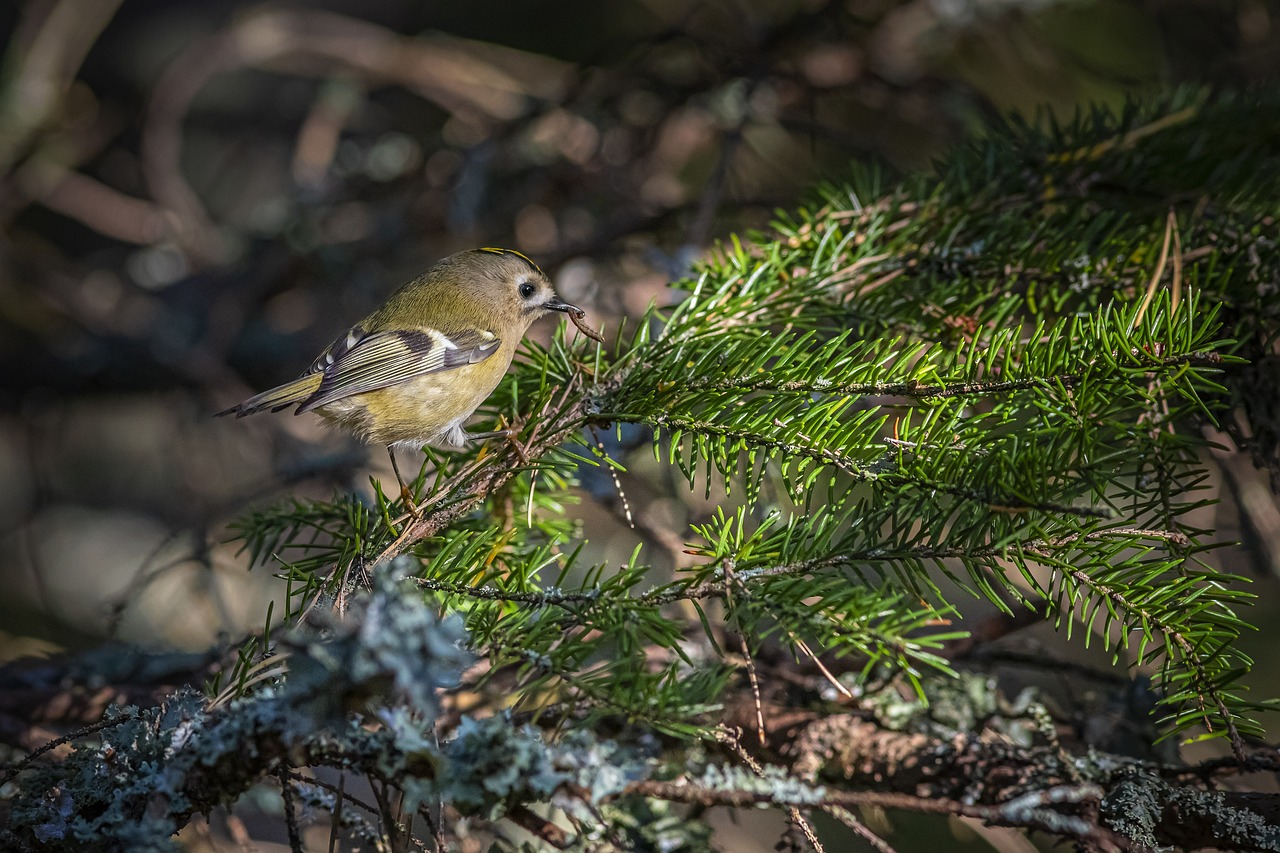The Goldcrest (Regulus regulus) is Europe’s smallest bird, known for its distinctive golden crown stripe and energetic nature. Here’s a concise overview of this delightful species:
Physical Description:
- Size: 8.5–9.5 cm in length, with a wingspan of 13.5–15.5 cm.
- Weight: 5–7 grams.
- Coloration:
- Crown: A bright yellow or orange stripe on the top of its head, bordered by black, which is more pronounced in males (orange) than in females (yellow).
- Body: Olive-green upperparts with paler underparts, a short, fine bill, and large, dark eyes.
Habitat:
- Range: Found throughout Europe and parts of Asia, as well as in northern Africa.
- Preferred Habitat: Goldcrests favor coniferous forests, particularly those dominated by spruce and fir, though they can also be found in mixed woodlands, parks, and gardens.
Behavior:
- Feeding: They primarily feed on small insects, spiders, and other invertebrates. Their tiny size allows them to glean insects from the tips of branches and needles of coniferous trees.
- Vocalizations: The Goldcrest has a high-pitched, thin call, which can be difficult for humans to detect. Their song is a rapid series of high notes.
- Movement: These birds are highly active, constantly flitting through trees in search of food.
Breeding:
- Nests: They build intricate nests high in coniferous trees, usually suspended from branches. The nest is small and cup-shaped, made from moss, spider webs, and feathers.
- Eggs: They lay 6–12 tiny eggs, with incubation lasting around 15–17 days. Both parents participate in feeding the chicks.
Migration:
- Resident and Migratory: While some Goldcrests are resident in their home range year-round, particularly in milder climates, northern populations often migrate south during the winter to avoid harsh conditions.
Conservation:
- Status: Classified as “Least Concern” by the IUCN, though populations may fluctuate due to harsh winters and habitat loss.
The Goldcrest is a remarkable example of how tiny creatures can thrive in cold and challenging environments, and its cheerful presence adds charm to woodlands across its range.
Visited 390 times, 9 visit(s) today
Views: 323
Subscribe to the newsletter:
